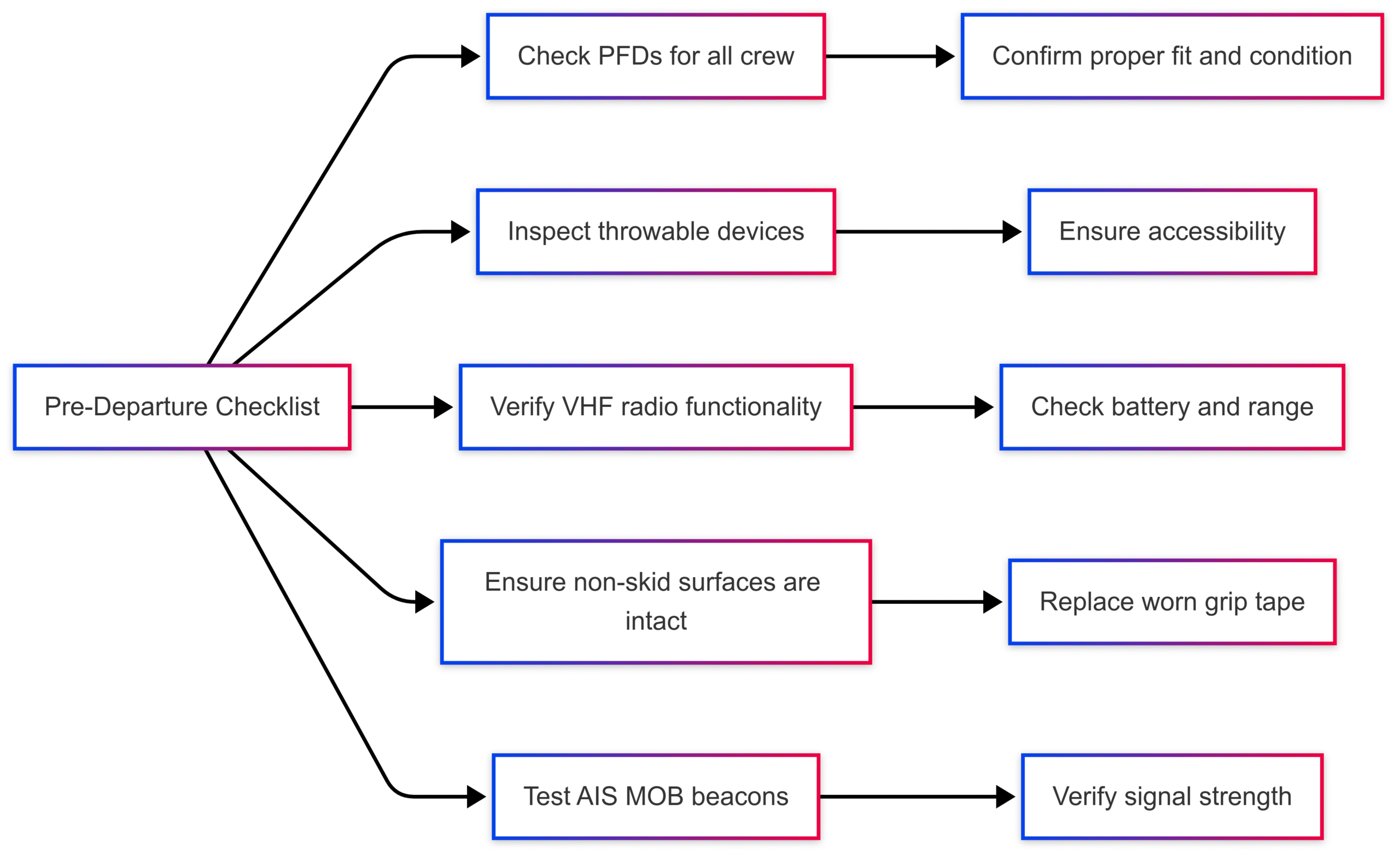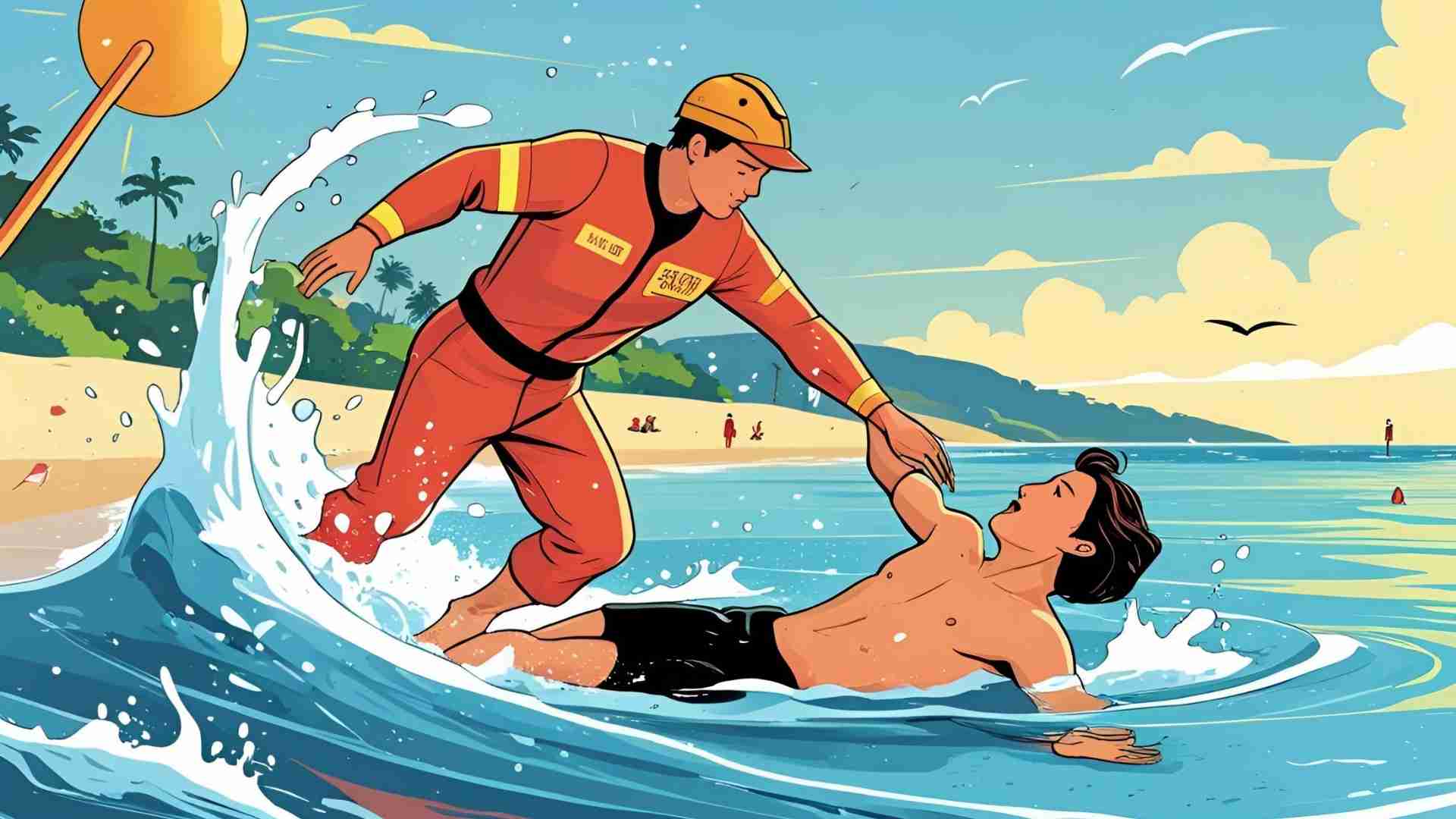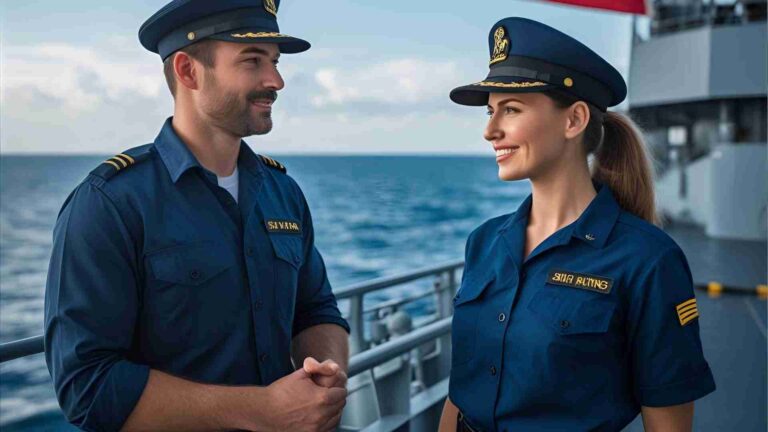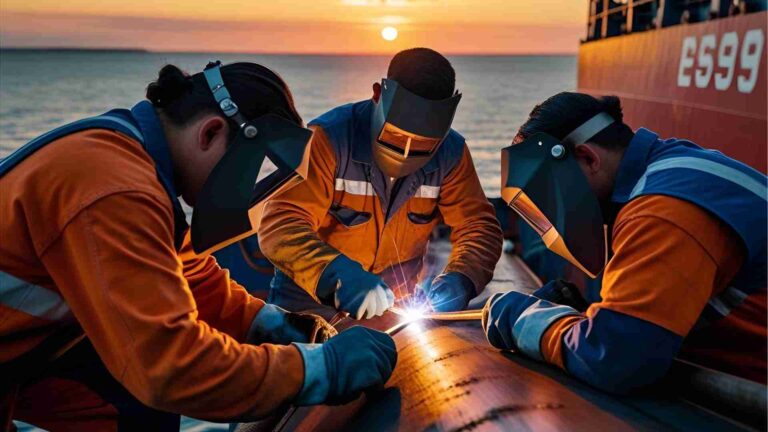What to Do When Someone Falls Overboard
Learn how to respond when someone falls overboard. Follow our step-by-step guide to ensure a safe, swift recovery and prevent future incidents.
Boating is a thrilling and enjoyable activity, offering moments of adventure and tranquility on the water. However, it comes with inherent risks, one of the most critical being a person falling overboard. A “man overboard” (MOB) situation is a maritime emergency that demands swift, coordinated, and calm action to ensure the safety and recovery of the individual in the water.
Whether you’re a seasoned skipper or a novice boater, understanding the precise steps to take in such a scenario can mean the difference between a successful rescue and a tragedy. This comprehensive guide outlines the immediate actions, boat maneuvering techniques, retrieval methods, post-rescue care, and prevention strategies to handle an overboard incident effectively. Additionally, it provides practical advice for skippers to brief inexperienced crew members, ensuring everyone is prepared for an emergency.
Immediate Actions in a Man Overboard Situation
When someone falls overboard, every second counts. The initial response sets the tone for the entire rescue operation, and clear, decisive actions are critical.
1. Shout “Man Overboard!”
The first step is to alert everyone on board by loudly shouting “Man Overboard!” This immediate announcement ensures that all crew members are aware of the emergency and can shift their focus to the rescue effort. It fosters a sense of urgency and coordination, prompting the crew to act as a team.
2. Assign a Spotter
Designate one person to maintain constant visual contact with the individual in the water. The spotter should continuously point at the person and communicate their location to the skipper or helmsman. Losing sight of the person, especially in choppy waters, low visibility, or at night, can make recovery extremely difficult. If available, technologies like an AIS (Automatic Identification System) Man Overboard Beacon, which can be integrated into life jackets, can assist in tracking the individual’s location.
3. Throw a Flotation Device
Immediately toss a flotation device—such as a life ring, life jacket, or any buoyant object—toward the person in the water. This provides critical buoyancy, helping them stay afloat and making them more visible to the crew. The principle of “reach, throw, don’t go” is vital here. Jumping into the water to assist is dangerous and should be avoided, as it risks creating another person in need of rescue. Instead, focus on throwing a rescue line or buoy to give the person something to hold onto.
4. Activate Alert Systems
If the boat is equipped with a GPS or chartplotter, press the MOB button to mark the exact location of the incident. This creates a reference point for navigation, especially useful in rough conditions or if visibility is poor. Additionally, issue a distress call using a marine VHF radio (Channel 16) or a cell phone to alert nearby vessels and the Coast Guard. A distress call should include the boat’s location, the nature of the emergency, and the number of people involved. For example, a mayday call might be: “Mayday, Mayday, Mayday, this is [boat name]. We have a man overboard at [coordinates]. Request immediate assistance.”
Maneuvering the Boat for Recovery
Once the immediate actions are taken, the next priority is to maneuver the boat safely to position it for retrieval. Proper boat handling is critical to avoid further endangering the person in the water.
1. Slow Down and Stop
Reduce the boat’s speed and bring it to a controlled stop as quickly as possible. For powerboats, shift to neutral or turn off the engine to prevent propeller injuries. For sailboats, ease the sails to reduce forward momentum. Stopping the boat minimizes the distance between the vessel and the person overboard, making the rescue more manageable.
2. Choose the Right Maneuver
The maneuver used to return to the person depends on the type of boat, sea conditions, and wind direction. One effective technique is the Williamson Turn, which allows the boat to reverse its course efficiently and return to the point of the incident.
Williamson Turn Steps

- Step 1: Turn the helm hard toward the side where the person fell (e.g., starboard if they fell off the starboard side).
- Step 2: Continue the turn until the boat is approximately 60 degrees from its original course.
- Step 3: Turn the helm hard to the opposite side (e.g., port).
- Step 4: As the boat approaches 20 degrees from the reciprocal course, return the helm to midships to stabilize the course.
- Step 5: Proceed back to the person’s location.
The Williamson Turn is effective for both powerboats and sailboats, as it minimizes the time and distance needed to return to the MOB. However, in strong winds or currents, other maneuvers, such as a figure-eight turn for sailboats or a slow circle for powerboats, may be more appropriate. Always approach from the leeward (downwind) side to maintain control and prevent the boat from drifting over the person.
3. Approach with Caution
As the boat nears the person, approach slowly and keep them on the operator’s side for better visibility. Position the boat so the person is on the leeward side, where the water is calmer, and the boat’s movement is more controlled. For sailboats, consider dropping or furling the sails to reduce heeling and simplify maneuvering. For boats with electric motors, engage the throttle carefully to avoid sudden movements.
4. Turn Off the Engine
Once the boat is in position for retrieval, turn off the engine or shift to neutral to eliminate the risk of propeller injuries. This is critical when the person is close to the boat, as even a slow-moving propeller can cause severe harm.
Retrieving the Person from the Water
Retrieving a person from the water is often the most challenging part of the rescue, particularly if they are injured, weak, or unconscious. The method depends on the boat’s equipment, the person’s condition, and the sea state.
1. Use Retrieval Devices
Deploy a life sling, boathook, or rescue ladder to assist the person back on board. A life sling is particularly effective, as it can be thrown to the person and used to pull them toward the boat. If the boat has a swim platform or boarding ladder, lower it to facilitate reboarding. For smaller boats without these devices, crew members may need to assist manually, but this should be done cautiously to avoid injury to both the rescuer and the person in the water.
Common Retrieval Devices
| Device | Description | Best Use Case |
|---|---|---|
| Life Sling | A buoyant sling with a line for pulling | General MOB recovery |
| Boathook | A pole to reach and pull the person | Small boats, conscious individuals |
| Rescue Ladder | A ladder for climbing aboard | Boats with swim platforms |
| Horseshoe Buoy | A throwable flotation device | Required on boats over 16 feet |
2. Assist the Person
If the person is conscious and able, guide them to the ladder or swim platform to climb aboard. For those who are weak or injured, multiple crew members may need to work together to lift them over the side. Use a harness or rope to secure the person and prevent further falls. If the person is unconscious, prioritize keeping their head above water and wait for professional assistance if necessary.
3. Considerations for Difficult Rescues
In cases where the person cannot be retrieved immediately (e.g., due to injuries or rough seas), maintain visual contact and continue communicating via radio with the Coast Guard or nearby vessels. Avoid sending a crew member into the water unless absolutely necessary, and if someone must enter, ensure they wear a life jacket and are secured with a lifeline.
Post-Retrieval Care
Once the person is back on board, their immediate safety is secured, but the response isn’t over. Proper post-retrieval care is essential to address potential medical issues and ensure their well-being.
1. Assess Their Condition
Check for signs of injury, hypothermia, or shock. Common risks include:
- Hypothermia: Prolonged exposure to cold water can lower body temperature, leading to shivering, confusion, or unconsciousness. Wrap the person in blankets or warm clothing and provide warm (non-alcoholic) drinks if they are conscious.
- Secondary Drowning: Inhaling water can cause pulmonary edema, where fluid builds up in the lungs, leading to breathing difficulties. This is a medical emergency requiring immediate attention.
- Shock or Injuries: Falls or impacts during the incident may cause internal injuries, fractures, or concussions.
2. Seek Medical Attention
Even if the person appears unharmed, transport them to shore for a medical evaluation. Hidden injuries or delayed symptoms, such as those from secondary drowning, can be life-threatening. Contact emergency services if the person shows signs of distress, such as difficulty breathing, confusion, or severe pain.
3. Monitor and Support
Continue monitoring the person’s condition during the return to shore. Provide reassurance and keep them comfortable. If the incident was severe, report it to the Coast Guard or local authorities, as required by maritime regulations.
Prevention: Reducing the Risk of Overboard Incidents
While knowing how to respond to a man overboard situation is critical, preventing such incidents is equally important. Proactive measures can significantly reduce the risk.
1. Wear Personal Flotation Devices (PFDs)
Ensure all crew members wear properly fitted life jackets, especially in rough conditions or when moving on deck. Modern PFDs are lightweight and comfortable, making them practical for all-day wear. For skippers sailing solo or with inexperienced crew, consider wearing a PFD equipped with a personal locator beacon (PLB) or AIS MOB device for added safety.
PFD Types and Specifications
| Type | Description | Price Range (USD) |
|---|---|---|
| Type I | Offshore life jacket, high buoyancy | $50–$150 |
| Type II | Near-shore vest, moderate buoyancy | $30–$100 |
| Type III | Flotation aid for calm waters | $20–$80 |
| Type IV | Throwable device (e.g., life ring) | $15–$50 |
2. Conduct Safety Briefings
Before setting sail, brief all passengers on safety protocols, including what to do in a man overboard situation. For skippers, this is particularly important when sailing with inexperienced crew. A clear, concise briefing can empower novices to act effectively in an emergency.
Sample Safety Briefing for Inexperienced Crew
- If someone falls overboard:
- Shout “Man Overboard!” and point at the person, keeping them in sight.
- Throw a life ring or flotation device.
- Press the MOB button on the GPS or VHF radio’s DSC (Digital Selective Calling) button to alert authorities.
- If the skipper falls overboard:
- Release the main halyard to drop the mainsail and furl the jib to reduce heeling.
- Start the electric motor and steer toward the skipper, approaching from downwind.
- Stop the motor when close and assist the skipper aboard using a life sling or ladder.
- General safety:
- Stay seated and avoid standing on gunnels or the bow.
- Hold onto railings or secure points when moving on deck.
- Familiarize yourself with the location of safety equipment (life jackets, life sling, VHF radio).
3. Practice Man Overboard Drills
Regular drills are essential for preparing the crew to respond efficiently. Conduct live drills using a floating object, such as a cushion, to simulate a person in the water. Make the drills engaging to build confidence and reinforce procedures. For example, randomly initiate a drill during a sailing trip to keep the crew alert and prepared.
4. Maintain Boat Safety Features
Ensure the boat is equipped with essential safety gear, including:
- Type IV throwable devices (required for boats over 16 feet).
- Non-skid surfaces or grip tape to prevent slips.
- Secure railings and lifelines, regularly inspected for wear.
- Emergency communication devices, such as a VHF radio or PLB.
Boat Safety Checklist

5. Take a Boating Safety Course
Enroll in a boating safety course through organizations like Boat-Ed or the U.K. Royal Yachting Association. These courses, accredited by the National Association of State Boating Law Administrators (NASBLA), cover critical topics such as MOB procedures, navigation, and emergency response. Completing a course not only enhances safety but may also be required for boating certification in some regions.
Special Considerations for Skippers with Inexperienced Crew
For skippers sailing sporty yachts without lifelines, as described in the user’s scenario, the risk of falling overboard is higher. Briefing inexperienced crew on how to rescue the skipper is crucial, especially on boats with electric motors and minimal deck safety features. Here’s a simplified procedure tailored for novices:
Simplified MOB Procedure for Inexperienced Crew
- Shout “Man Overboard!” and point at the skipper, keeping them in sight.
- Throw a flotation device (e.g., life ring or life sling) toward the skipper.
- Release the main halyard to drop the mainsail, preventing heeling and boom hazards.
- Furl the jib to simplify boat control.
- Start the electric motor and steer toward the skipper, approaching from downwind.
- Stop the motor when close and use a life sling or ladder to assist the skipper aboard.
- Press the DSC button on the VHF radio or call 911 to alert authorities if needed.
This sequence minimizes the risk of accidental gybes or excessive heeling, which could endanger the crew or the boat. By dropping the sails and using the electric motor, novices can focus on steering without needing to manage complex sail adjustments. Demonstrating these steps during a live drill, as suggested by user tenuki_, can make the process more memorable and engaging.
Additional Tips for Safety Briefings
- Keep it simple: Use clear, concise instructions and avoid technical jargon.
- Show, don’t just tell: Physically demonstrate how to release the halyard, furl the jib, and operate the motor.
- Make it fun: Frame drills as a game to reduce anxiety and build enthusiasm.
- Assign roles: Designate tasks (e.g., spotter, radio operator) to ensure an organized response.
- Highlight communication: Teach crew to use the VHF radio (Channel 16) or a cell phone to call for help, emphasizing the importance of clear distress calls.
Conclusion
A man overboard situation is a serious emergency that requires immediate action, clear communication, and proper preparation. By shouting “Man Overboard!”, assigning a spotter, throwing a flotation device, and maneuvering the boat carefully, skippers and crew can execute a swift and safe rescue. Post-retrieval care, including medical evaluation and ongoing monitoring, ensures the person’s well-being. Prevention strategies—such as wearing PFDs, conducting safety briefings, and practicing drills—reduce the likelihood of incidents. For skippers sailing with inexperienced crew, a simplified rescue procedure and hands-on training are essential to empower novices to act effectively.
Boating is a rewarding activity, but safety must always come first. By mastering these overboard recovery techniques and fostering a culture of preparedness, boaters can enjoy their time on the water with confidence, knowing they’re equipped to handle emergencies. For further learning, consider enrolling in a boating safety course through Boat-Ed or exploring additional resources on maritime safety.
Happy Boating!
Share What to Do When Someone Falls Overboard with your friends and leave a comment below with your thoughts.
Read are aluminum boats good for saltwater until we meet in the next article.






